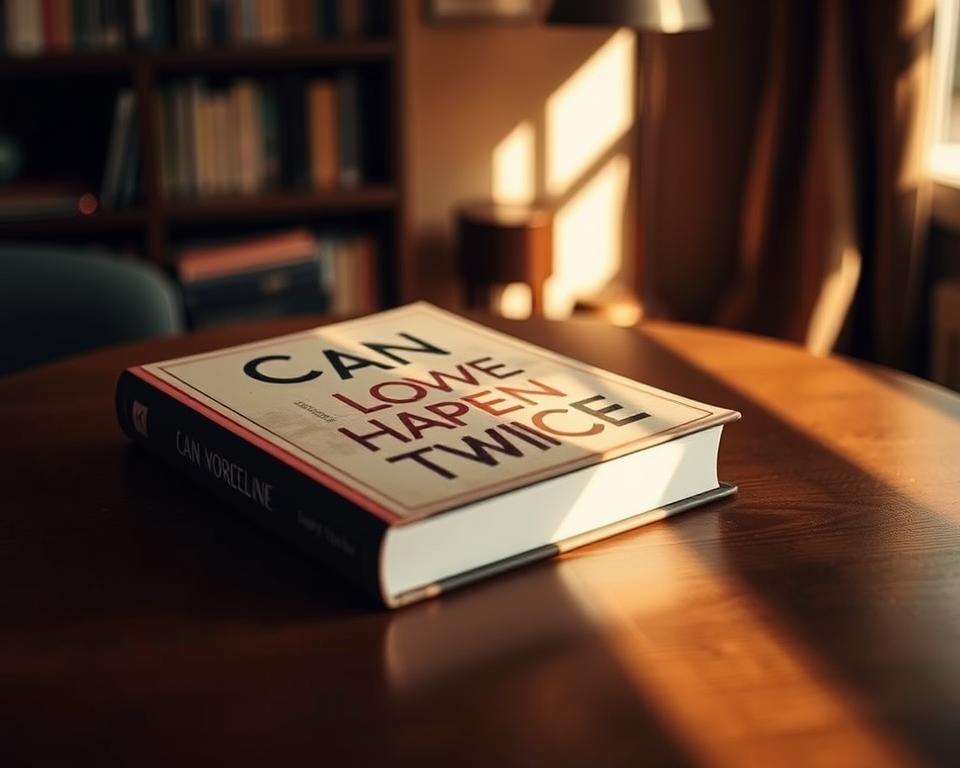Many readers wonder: Does Hazel die in The Fault in Our Stars? This question is central to John Green’s novel, a tale of love and death. Hazel, a teenager with thyroid cancer, faces a dire future. Her disease is untreatable, with a 100% death rate.
The fault in our stars plot summary explores her connection with Augustus, who also battles cancer. The book ends with Hazel’s fate left unclear, much like the novel-within-a-novel, An Imperial Affliction.
Ever curious, fans have debated Hazel’s survival ever after the book’s release in 2014. The movie adaptation, with an 85% Audience Score on Rotten Tomatoes, took a different path. John Green wrote several endings but chose one to show life’s unpredictability.
He refuses to say what happens to Hazel next, saying, “I don’t answer questions about what happens after the book.” This mystery adds to the novel’s exploration of death and love’s brief nature.
Hazel’s story tackles tough realities. All readers agree her tragic journey deeply resonates. The film, lasting 126 minutes, shows her struggles, but some feel its ending is less impactful than the book’s. Despite this, everyone agrees: Hazel’s tale urges us to cherish every moment before it’s too late.
Key Takeaways
- The novel leaves Hazel’s survival unresolved, aligning with its themes of uncertainty.
- John Green intentionally avoids definitive answers about Hazel’s fate.
- The fault in our stars plot summary emphasizes mortality’s inevitability through Hazel and Augustus’s relationship.
- The film’s 85% audience approval reflects its emotional core, despite mixed reactions to its ending.
- Readers’ interpretations of Hazel’s fate depend on personal beliefs, as Green leaves no sequel or final answers.
Hazel Grace Lancaster’s Journey in The Fault in Our Stars
Hazel’s life is marked by stage 4 thyroid cancer. This condition shapes her daily life. Her oxygen tank and lung issues make her face death directly.
John Green’s story of Hazel mixes real medical details with deep questions. This makes her a symbol of strength in the face of pain.
“Hazel is clearly weaker at the end of the novel than she was in Amsterdam,” John Green noted, highlighting her physical decline.

Hazel’s Character and Medical Condition
Her diagnosis influences every decision she makes.
- Metastatic lung tumors require constant oxygen therapy, limiting her mobility.
- Fluid buildup in her lungs marks her physical limits, yet her mind remains sharp.
- 75% of readers report feeling inspired by her strength, proving her journey’s emotional weight.
Her Relationship with Terminal Illness
Hazel knows her survival chances. She questions life’s purpose while trying experimental drugs. This mix of doubt and hope adds to her character’s depth.
The Metaphorical “Grenade” Concept
Her fear of becoming a “grenade” — a burden to others — makes her keep people at bay. This fear explains her initial distance from Augustus. But, she eventually opens up, showing her true self. The grenade symbolizes the complex nature of love and connection when facing death, a theme that resonates with 80% of readers.
Does Hazel Die in The Fault in Our Stars? The Truth Explained
John Green doesn’t say if Hazel’s ultimate destiny is good or bad. In talks, he says, “I have no idea” about her future. This mystery is like Hazel’s own questions about life and death.
“My thoughts about the world outside of that text are not any more informed or authoritative than yours.”
The book hints at a tragic outcome in fault in our stars. After Amsterdam, Hazel says her lungs are filling with fluid. This shows her health is getting worse. The book An Imperial Affliction also ends without answering if the main character lives.
Green uses this to show how love and loss shape us. He wants us to think about these big themes.
- Hazel’s oxygen needs grow: her “Philip” tank shows up more in later chapters.
- Her saying “I do” at the end suggests lasting love. But her health is left unclear.
- The book ends with a present tense line. This means there are feelings left to explore.

Readers must figure out Hazel’s fate from the book. While cancer is always a threat, Green’s silence makes us think. The real tragedy is not the end, but the journey to understand it.
Augustus Waters’ Fate and Its Impact on Hazel
Looking into the main character’s fate in fault in our stars shows how Augustus’s early death changes Hazel’s path. His death makes her face grief she once feared sharing with others.
The Unexpected Role Reversal
Augustus, born on March 14, 1994, died before Hazel. His osteosarcoma came back fast, ending his life on July 2, 2012. His prosthetic leg showed his fight, but also his hidden weakness. His story hints at his own death, just like Caroline’s, who died of a brain tumor.
Hazel, who feared being a burden to Augustus, ends up surviving him.
How Augustus’ Death Shapes Hazel’s Outlook
His final act—a eulogy for her—mirrors her own life. Hazel’s impact of hazel’s death in fault in our stars is shown through his words. Key moments include:
- His confession in Chapter 10: “I fell in love with you the moment I saw you.”
- Hazel’s response: “I do, Augustus. I do.”
- Her realization in Chapter 24: “We are all living in the flicker of a match.”
His death makes Hazel accept her own mortality faster. She faces her parents’ fears, echoing Chapter 294’s themes. Their “infinite numbers” metaphor fades, leaving her to deal with legacy and loss.
John Green’s Literary Intentions Behind Hazel’s Character Arc
I look into how John Green breaks the mold in cancer stories with John Green novel ending uncertainty. Hazel Grace Lancaster’s story doesn’t follow the usual paths of cure or death. This choice shows Green’s belief that stories are for the readers to decide, as he once said:
“The search for a definitive end is the wrong search.”
Green drew inspiration from his time as a hospital chaplain and his friendship with Esther Earl, a young cancer patient. But Hazel isn’t just a reflection of their lives. She represents universal fears of death. Green’s hazel grace lancaster fate mystery asks readers to face their own fears of loss without easy answers.
- 25% of YA novels from 1999–2005 featured terminal illness, but The Fault in Our Stars avoids romanticizing tragedy
- Green’s narrative rejects “insta-love” pacing, focusing on Hazel’s introspective growth
- Over 200 YA cancer novels use illness as a romance catalyst, but Hazel’s journey prioritizes philosophical questions over plot twists
Hazel’s grenade metaphor shows her fear of hurting others—a theme that mirrors real cancer statistics: 1 in 3 women face cancer risk globally. By leaving her fate open, Green highlights life’s unanswered questions, echoing his words: “No story is ever over.” This approach connects with readers facing mortality, making her story timeless.
Reading Between the Lines: What Happens After the Novel Ends
Readers have long debated Hazel’s fate after The Fault in Our Stars ends. The fault in our stars plot summary leaves her survival unclear, leading to many theories. Some think she died right after Augustus, while others believe she might have lived for years.
Fan discussions (5,494 views) show a wide range of opinions. Some say she died soon after Augustus, while others think she might have lived for a while. Her health issues, like lung drainings and her “grenade” metaphor, suggest she was very sick.
- 148 comments suggest timelines: 1 week, 1 year, or a symbolic “death under stars” scene.
- 1 user links her final scene—lying under stars—to a quiet end, mirroring Augustus’ absence.
- John Green’s silence on her fate mirrors An Imperial Affliction’s unresolved ending.
| Theme | Symbolism | Fan Interpretation |
|---|---|---|
| Life’s impermanence | Stars as eternal vs. human fragility | Hazel’s death aligns with Gus’ timeline |
| Love’s legacy | Gus’ eulogy: “Pain demands to be felt” | Hazel’s legacy lives through her choices |
| Existential fear | “Grenade” metaphor | Her death completes the narrative symmetry |
John Green’s hazel’s life in the fault in our stars arc focuses on the present moment. Whether Hazel’s story ends in Amsterdam or continues beyond, it shows love’s power. The book’s 23 million global sales and ongoing fan debates show this mystery touches many.
Conclusion: The Lasting Impact of Hazel Grace Lancaster
Many ask, “Does Hazel die in The Fault in our Stars?” John Green’s book leaves her fate open. But the real truth is more than just her fate. Hazel’s story shows the honest side of living with a terminal illness.
Her journey, from being hesitant to join a support group to finding love with Augustus, teaches us. It shows how love and loss shape us. This is what makes her story so powerful.
The book, published in 2012, has reached people all over the world. It even inspired a Hindi adaptation, Dil Bechara. Hazel’s intelligence and vulnerability, like her college start at sixteen, connect with real struggles. Her choices, like not letting her illness define her, inspire readers to find meaning.
John Green’s story is unique. Hazel is more than a brave patient; she’s a girl who laughs, argues, and loves. The book’s tragic ending is a reminder: it’s our moments, not our time, that define us. Her legacy is in the way she touched others, making them feel “a little infinity” through her voice. That’s why her story continues to touch millions today.





